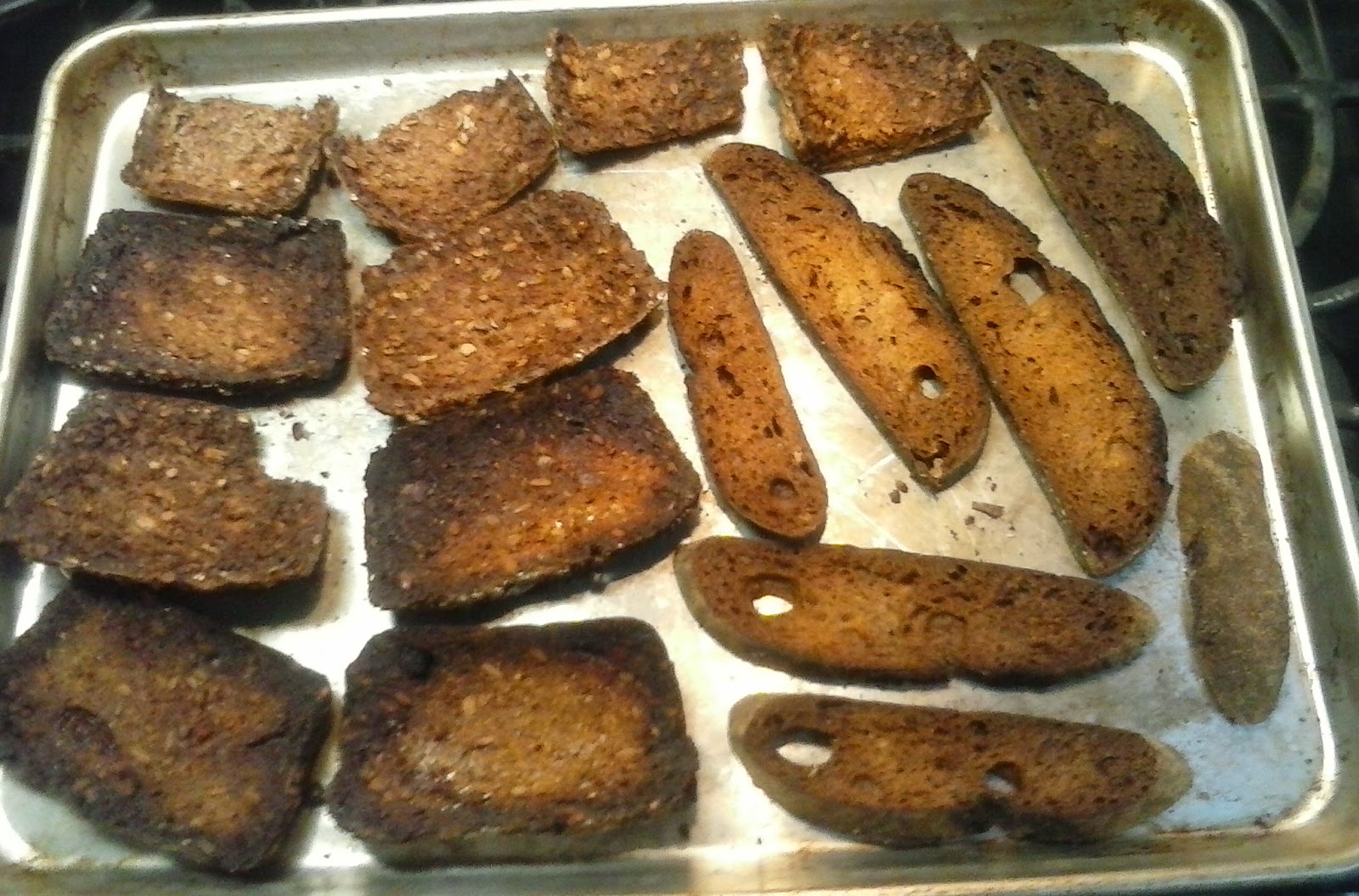Introduction
I have been really into my German rye bread (Vollkornbrot!) lately, but I have been wanting to try some different ryes for a while now. One variation that seems intriguing is black bread. Black bread is a rye based bread that is darkened with additional ingredients and with a long slow bake that caramelizes the sugars in the dough. Dark rye that you buy in the store is usually just regular rye with caramel coloring added to it. A whole foods approach with the same effect is to add molasses, cocoa, coffee, or a soaker of deeply toasted old bread. Black breads are common in the cuisine of eastern and northern Europe, and if you search online you can find Russian, German, and Finnish versions (just to name a few).I have been eyeing a couple rather complicated looking recipes in Hamelman's Bread book for black bread & and Horst Bandel's Black Pumpernickel. I also wanted to try using dark beer malt to see how that would contribute to the color, so I tried this Lithuanian version as well.
Materials & Methods
- The recipes are long and complicated and in the book so I won't retype them here. Just a few notes on what I did differently (i.e. wrong).
- In general the old bread soaker that I made for the recipes in Hamelman's Bread was not toasted dark enough and was too wet. I strained off the liquid but I didn't really squeeze out the bread. I think that must be necessary because these doughs were way too wet.
- The old bread soaker should also be ground up more than I did. You can see noticeable flecks of old bread in these loaves (they look like raisins in the photos below).
- Also I was out of Bread Flour so I used All Purpose. Often that doesn't make a big difference but this time I think it did.
- The water that I strained off of the old bread soaker was used to brew a couple batches of Kvass
(one with sugar and one with dark malt powder)

- I pretty much followed the instructions. but I did add 50g of cracked malted barley from the homebrew store to see how it works in bread & how it might compliment the dark malt powder.
Black Bread
- I had to add about 10-15g of extra WW flour bc the dough was too wet to work with.
- This was also too wet (not only bc of the wet soaker but bc I added an extra 170g of water by accident) so I added an additional 280g rye and 370g WW flour.
- I could not find rye berries so I used wheat berries
- I could not find rye chops so I used 10 grain hot cereal from Bob's red mill.
- The recipe says you can fit 4lbs of dough into a loaf pan. This seemed to be too much for my pans - definitely use less next time.
- I left this to rise too long while I was baking the other loaf. It seems like it might have gone flat on top. Next time pay closer attention to this.
Results
Lithuanian Black Bread - This came out a solid brown color, but I wouldn't quite call it black. The dark barley malt and malted barley grains added a distinct sweet malty flavor (which I'm not sure I care for) but didn't make it all that dark. I suspect the recipe may have meant diastatic malt powder, which would have active enzymes that contribute to starch/sugar breakdown. I don't think these enzymes are present in beer malts. Next time try with DMP.Black Bread - This one is a darker shade of brown approaching black. The flavor is very bold & robust with a strong presence of coffee. The coffee grounds that I used were Cafe Bustello esspresso, which is really dark, roasty and kind of bitter. I think something a little more mild would be more appropriate. I didn't add caraway seeds because I usually prefer the flavor of rye without them, but I think they would compliment the roasty coffee bitterness well here... maybe with a crust of caraway and rock salt on the top too.
HB's Black Pumpernickel - This one is dark enough to call 'black' in my opinion. I think it would have been better if I had ground up the old bread a bit better. And an egg wash to make the top glossy would look good too. This bread baked at a low temperature for a really long time & the smell was amazing as it aproached doneness. The flavor is great too. Very complex with a sour tang from the rye sourdough and lingering sweetness from the molasses.
































